Extract from The Guardian
Climate change and human activity are threatening the existence of
some of the world’s largest lakes. These photographs document
dramatic changes to the landscape in Bolivia, the Middle East, the
former Soviet Union , China and west AfricaKatherine Purvis and Catalin Trif
Friday 9 December 2016 21.16 AEDT
Lake Poopó – Bolivia
Lake Poopó was a large saline lake located in the Altiplano in Bolivia. The photo on the left, taken on 12 April 2013, shows the lake filled with water. The photo on the right was taken less than two years later, showing the lake almost dry. Glacial melting and the diversion of the lake’s tributaries contributed to its decline.
Photograph: Nasa Earth Observatory/AP
Lake Poopó – Bolivia
An abandoned boat lies on the dried bed of Lake Poopó on 12 January 2016. The lake used to cover about 1,000 square kilometres and was home to four native species of fish.
Photograph: Juan Karita/AP
Dead Sea – Jordan, Israel, Palestine
The Dead Sea, the lowest point on Earth, has been shrinking at a rate of around one metre each year, for the last 50 years. One of the main reasons behind this depletion is that some of the water sources it relied on were diverted in the 1960s.
Photograph: Landsat/Lakepedia
Aral Sea – Kazakhstan and Uzbekistan
The Aral Sea has been shrinking steadily since the 1960s after its tributaries were diverted by Soviet irrigation projects. By 2007, the lake had declined to 10% of its original size and had split into four separate lakes. The eastern basin of the former South Aral Sea has now completely dried up and is called the Aralkum Desert.
Photograph: Times Comprehensive Atlas of the World/PA
The shrinking of the once vast Aral Sea left behind a salty wasteland dotted with abandoned fishing boats and ruined the local economy. Scientists are now working out ways to catalogue and map the world’s most threatened ecosystems, similar to the list of endangered species.
Photograph: Alexander Zemlianichenko/AP
Poyang Lake – China
China’s largest freshwater lake has been shrinking dramatically since the start of the century. At one point, the lake covered 4,500 square kilometres but its surface has been recently recorded as low as 200 square kilometres. The main reasons for this dramatic decrease are diversions from the Yangtze River, a prolonged dry season, and industrial activities.
Photograph: Landsat/Lakepedia
Poyang Lake – China
Cattle graze on the dried bed of Poyang Lake in November 2016. The lake is an important wildlife sanctuary, providing habitats for half a million migratory birds. It is a favourite destination for migrating Siberian cranes and is home to the endangered finless porpoise, known locally as the jiangzhu. The current rate of population decrease is likely to spell extinction for the porpoise by 2025.
Photograph: Xinhua/Barcroft Images
Hulun Lake – Mongolian Plateau
The Mongolian Plateau has seen dramatic shrinkage of its lakes over the last few decades, mainly due to intensive human activities and climate change. One of the biggest lakes on the plateau, Hulun, has lost 291 square kilometres of surface area. This composite of satellite images, gathered by Lakepedia, from 1996 (L) and 2016 (R). The smaller lake of Xinkai to the east of Hulun Lake had dried out completely by 2010.
Photograph: Landsat/Lakepedia
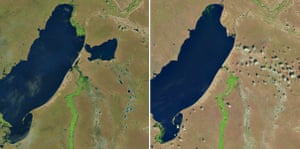
Lake Chad – Chad, Niger, Nigeria, Cameroon
Once one of Africa’s largest bodies of fresh water, Lake Chad is now a ghost of its former self. According to a study by University of Wisconsin-Madison researchers, the lake is now one 20th of the size it was 35 years ago. Massive irrigation projects, an increasingly dry climate, and declining rainfall have all contributed to its decline. This montage shows the lake in 1963, 1973, 1987 and 1997. The red colour represents vegetation on the lake bed where there used to be water.
Photograph: NASA/AFP
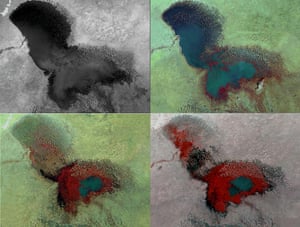
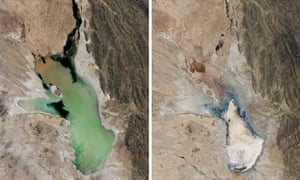
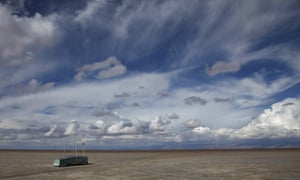
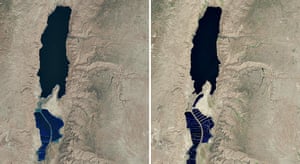

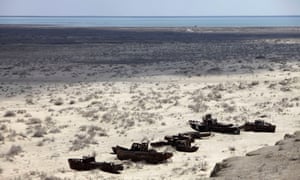

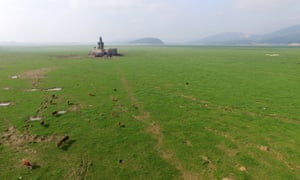
No comments:
Post a Comment